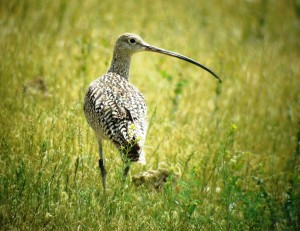Birders are a restless, impatient lot. From the end of June till the end of August they walk around in a kind of stupor. You will see them occasionally stop shuffling, cock their head with hand cupped behind their ear – then mutter “wren” and shuffle on, or suddenly, reflexively jerk their head upwards as the shadow of a pipevine swallowtail dances on the path beneath their feet.
Then, late August comes and imperceptibly, at first, the afternoon and evening light begins to shift hues as we wobble out of the sun’s direct glare. The wind has a different feel and a different smell; birders’ gaits quicken and lighten and binoculars are dusted off and stashed in the car or left out on the kitchen table. Migration is coming!
Some of the earliest migrants are shorebirds. I think it was Peter Matthiessen who coined the term “wind birds” in reference to shorebirds in his 1967 book The Wind Birds. “The restlessness of shorebirds, their kinship with the distance and swift seasons, the wistful signal of their voices down the long coastlines of the world make them, for me, the most affecting of wild creatures. I think of them as birds of wind, “as wind birds.” And wind birds can cover great distances in a short time and sometimes wind up in odd places.
And what better to stir the blood of WNC birders and jolt them from their summer doldrums than to have appear magically on the green turf of Hooper Lane’s Super Sod farm, as if conjured from the wind itself – a long-billed curlew.
The long-billed curlew is a large (raven-sized) shorebird with a long (to eight inches in adults – shorter in juveniles) decurved bill. The long-billed curlew is cinnamon to tawny-brown above and buff-colored below. It nests on high plains from southwest Canada to the northwestern U.S., across the plains states, down to the Texas panhandle. Most of the population winters from the southwestern U.S. to Central America. A few make it to the East Coast each fall and winter.
But according to Harry LeGrand, chair of the North Carolina Bird Records Committee, the Hooper Lane bird would be the first ever documented record of an inland long-billed curlew in the state. And according to Catawba park ranger, Dwayne Martin of Hickory, who couldn’t resist temptation, the curlew was still present at Hooper Lane as of Monday, August 30 at 6:30 p.m.
To get to Hooper Lane, take the Asheville Airport exit (exit 40) off of I-26. Go west on NC 280 approximately 4 miles to a traffic light at the intersection of NC 191. Turn left, travel approximately 1/2 mile, turn left onto Jefferies Road. Continue about 2 miles and Hooper Lane is on the right. The bird was last reported from the field near the intersection Of Hooper and Jefferies.
If you go, please remember to stay on the gravel road or on the edge of the field. Super Sod has been quiet birder-friendly over the years, all they ask is that you do not walk or drive on the sod fields, do not block gates and park only along Hooper or Jefferies – not on any of their turn-rows!

